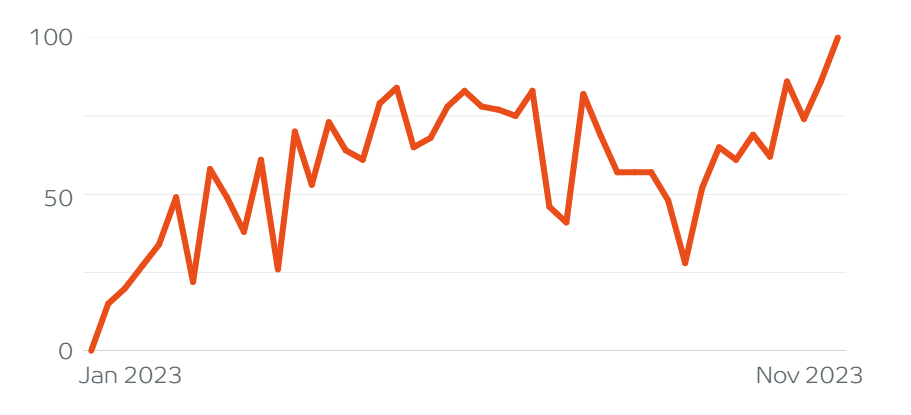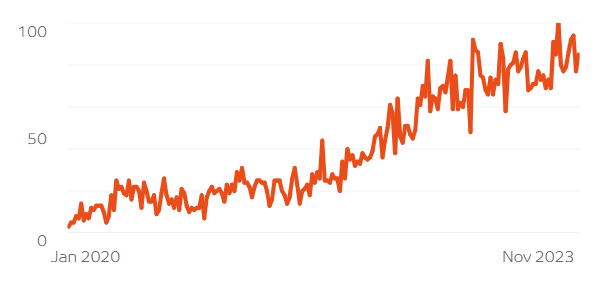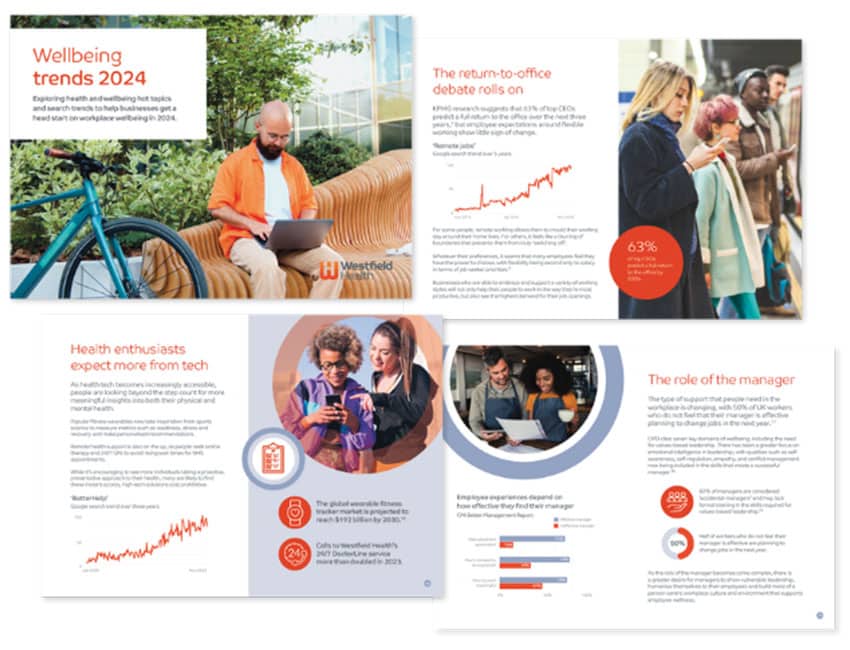AI may feel like a recent buzzword, but artificial intelligence has been a growing trend in healthcare for a number of years. It’s already being used to analyse DNA, create personalised treatment plans and provide better health outcomes for patients.
Our Wellbeing Trends 2024 report shows Google searches for ‘AI health’ continuing to rise, as well as a sustained interest in other tech-focused wellbeing solutions such as fitness wearables and online mental health support.

In this blog we explore how is AI impacting healthcare, and how personal health tech is being used to give both our mental and physical wellbeing a boost.
How is AI being used in healthcare settings?
AI technology has been developing in hospitals and healthcare settings for a number of years and providers are investing heavily across most aspects of patient care — from diagnosis, to surgery, to admin.
In June 2023, the UK Government pledged £21 million to roll out artificial intelligence across the NHS to help with the diagnosis of cancer, strokes and heart conditions.
Some key areas where AI is already being used to treat our health include:
- Robotics — especially in surgery to increase precision and speed.
- Genomics and DNA, including using AI to predict how individuals might respond to particular medicines or treatments, or how the same condition might vary between different people.
- Diagnosis of conditions such as breast, lung and skin cancer, including predicting predisposition to certain diseases.
- Personalised treatment plans through machine learning and big data analysis.
- Image processing, such as analysing x-rays and brain scans, speeding up diagnosis and freeing up doctors to spend more time with patients.
This rapid advancement of AI tech brings with it the need for new conversations and policies for healthcare providers, especially when it comes to data security, confidentiality and access to treatment. The Ada Lovelace Institute was established in 2018 to carry out independent research into the use of AI in healthcare and society as a whole.
How can health tech help our everyday wellbeing?
The global wearable fitness tracker market is projected to reach $192 billion by 2030, but the way we’re monitoring our health is changing. People are looking beyond simplistic measures such as BMI and step count, instead choosing to track more nuanced health indicators — including blood pressure, glucose levels and even gut microbiome.
High-end fitness trackers and wearables include more detailed metrics than ever before, including using AI to provide personalised recommendations. Metrics such as readiness, stress and recovery — commonly discussed in sports science — are now making their way into our daily vocabulary via our smartwatches.
Outside of physical fitness, more people are seeking remote mental health support. Searches for online therapy platform BetterHelp are booming, as people turn to (often self-funded) online therapy as an alternative to joining the NHS waiting list.

This trend towards remote healthcare extends to telephone services too. Calls to Westfield Health’s 24/7 DoctorLine service more than doubled in the past year. While telephone GPs have become increasingly common over the past few years, this sudden surge in demand suggests that people now view remote consultations as preferable to the 8am scramble for same-day GP appointments.
It’s a positive sign that people taking a preventative approach to their wellbeing, but unfortunately many of these more high-tech, self-funded solutions are likely to be out of reach for those who need them most. By providing healthcare benefits such as health cash plans or EAPs, workplaces can help their people access the support they need.
Other wellbeing trends for 2024
Check out our full Wellbeing Trends 2024 report to explore the key themes for workplace wellbeing this year, including new hybrid working models, health tech and workplace communities — and how to use these trends to engage your people with their health.
